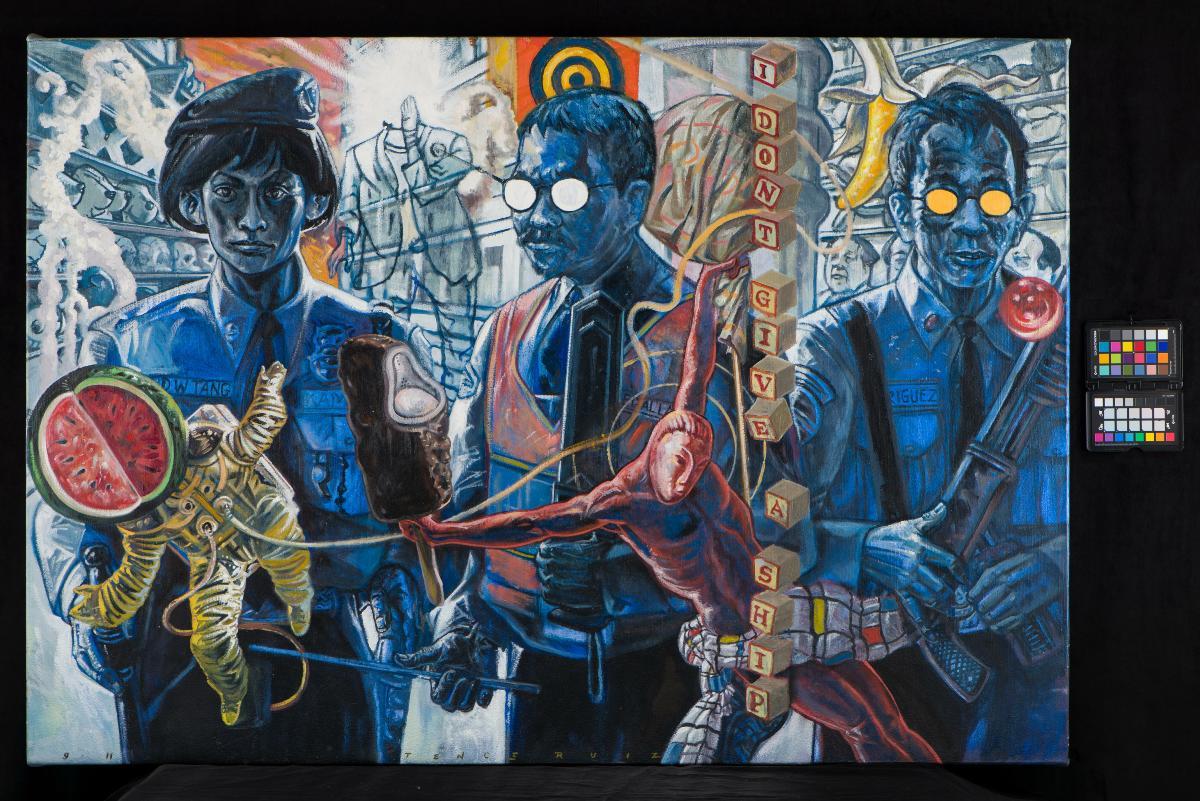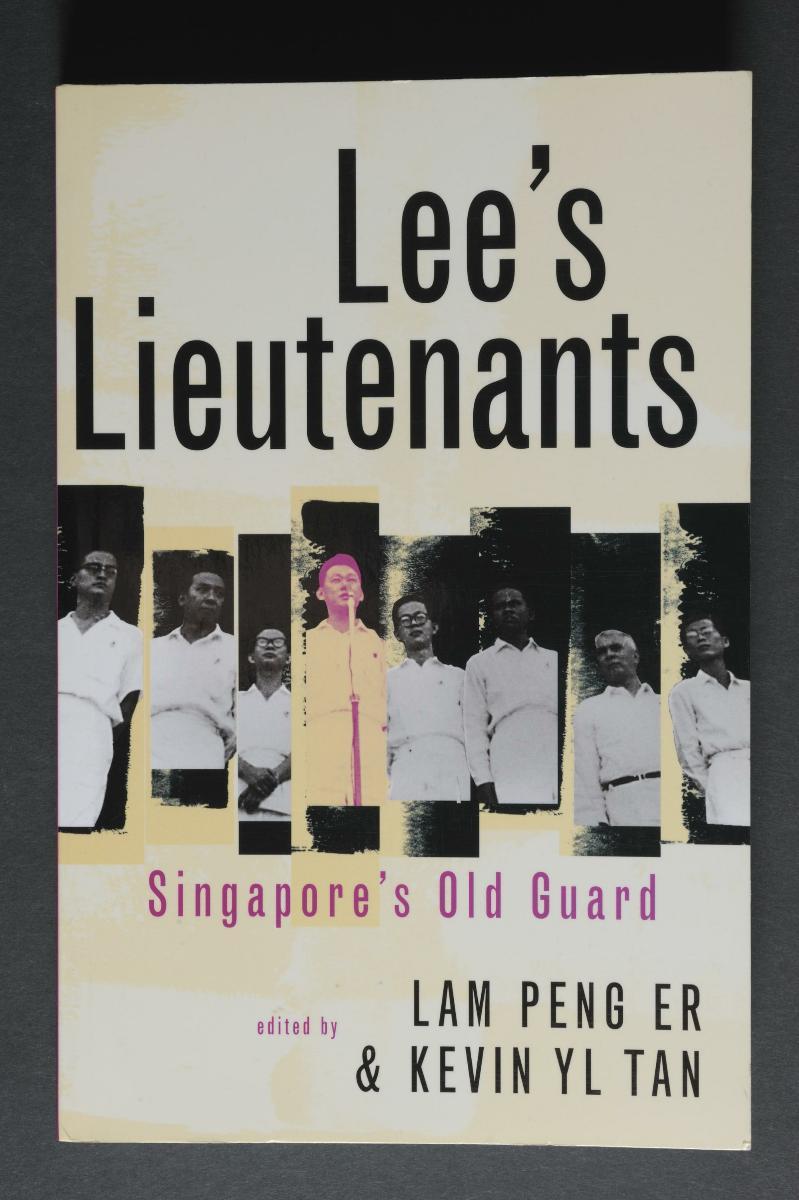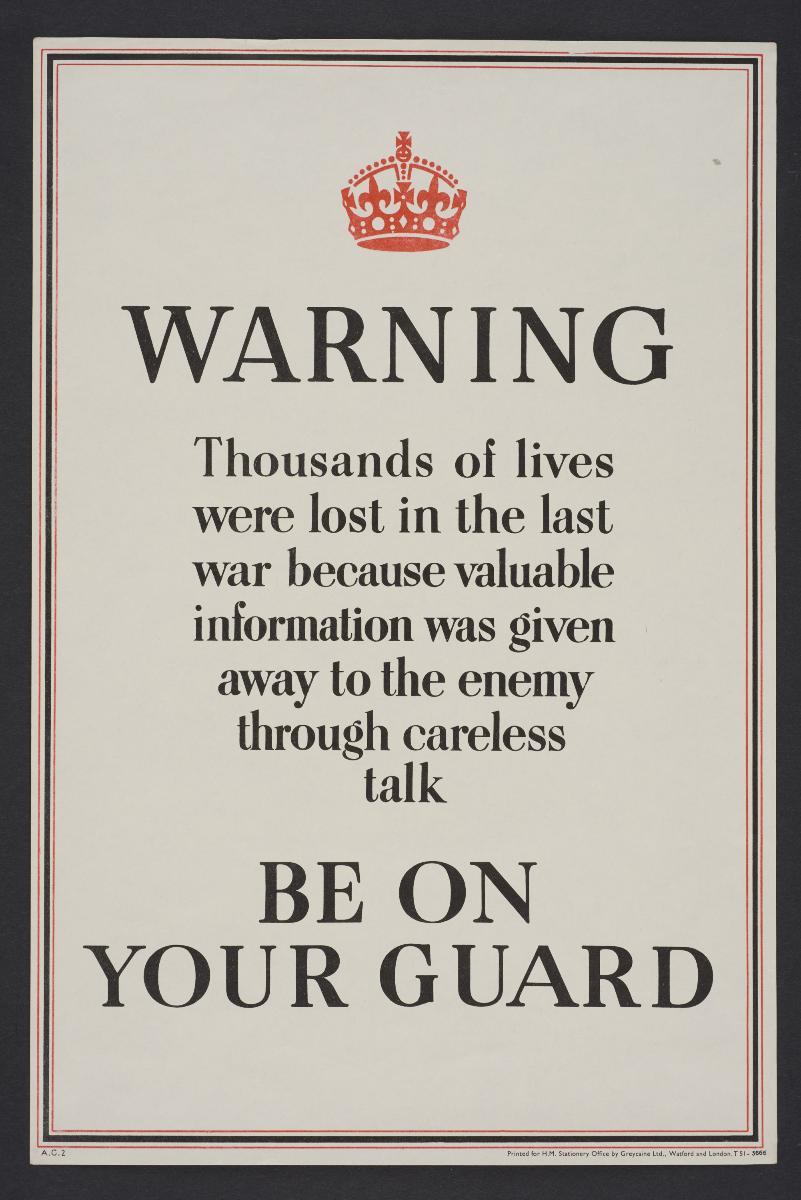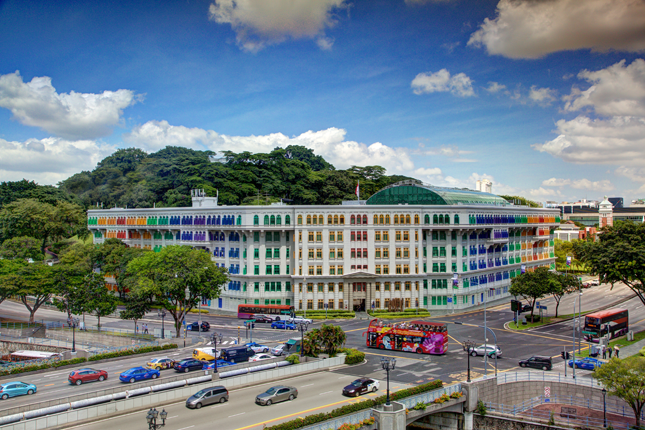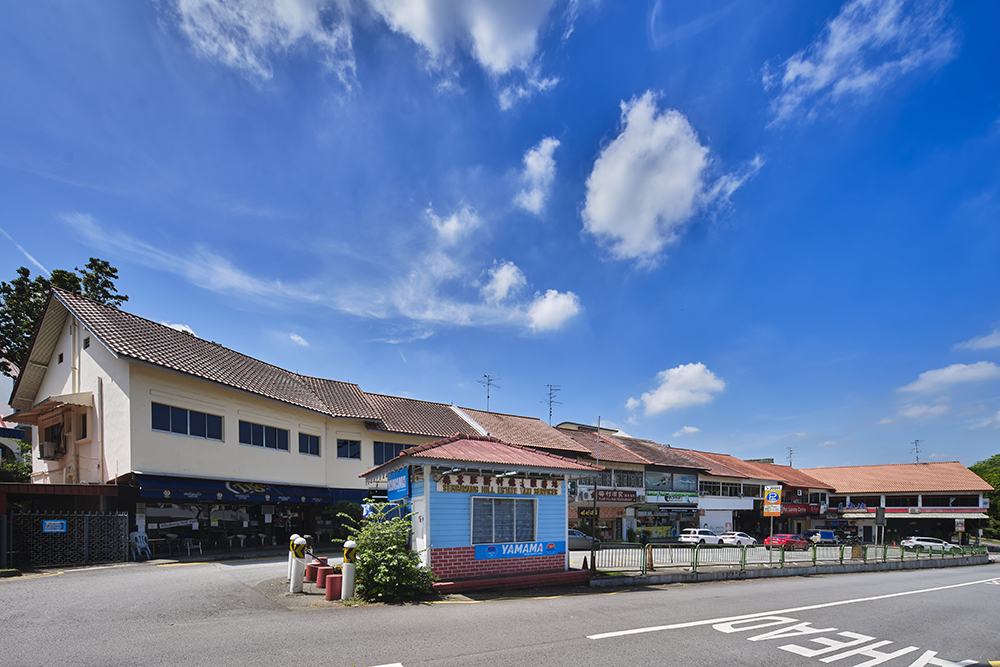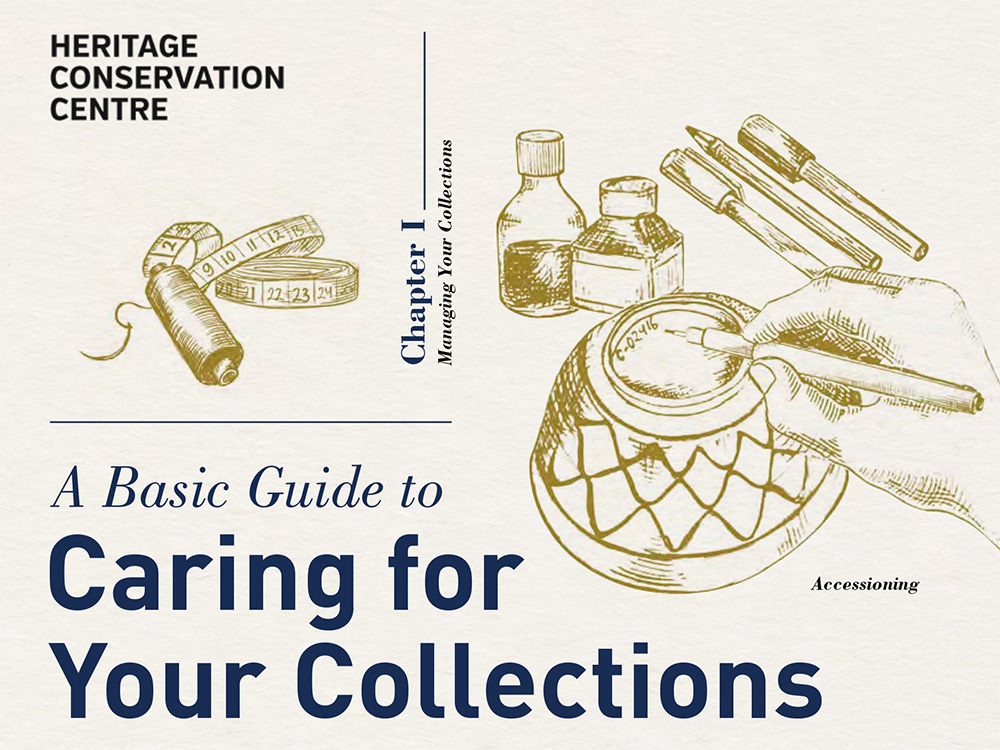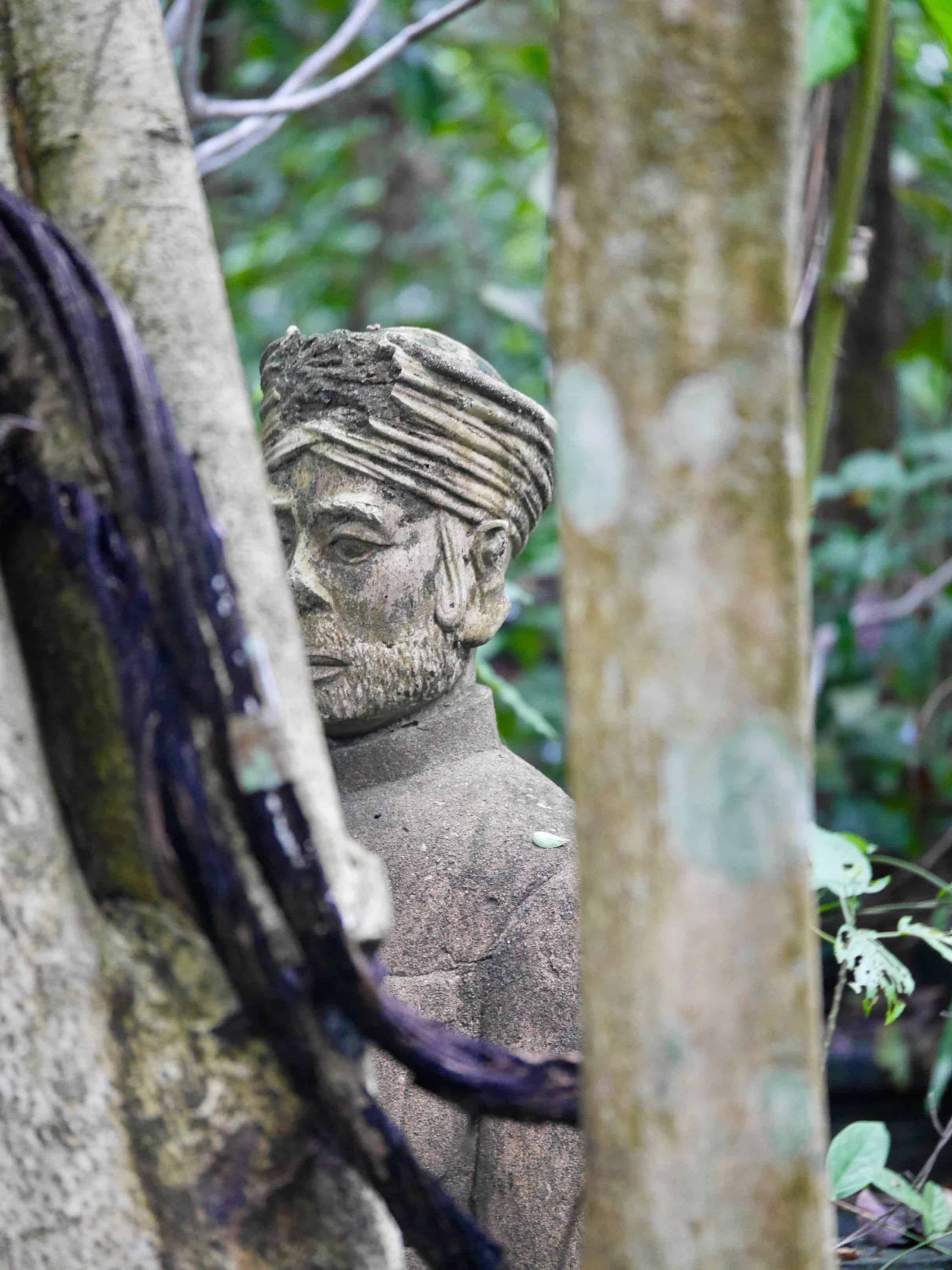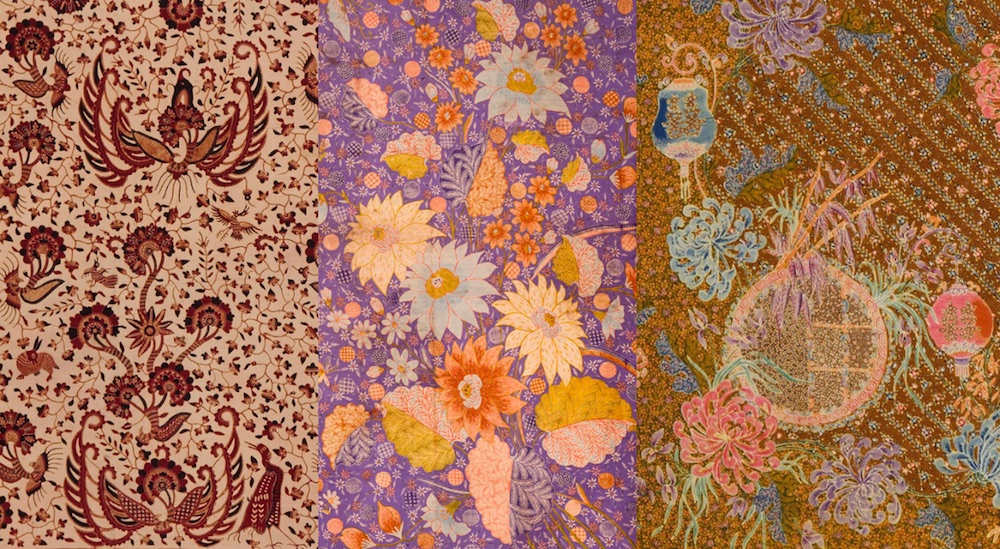Born in 1956, Manila, Jose Tence Ruiz is known for his confrontational, satirical and philosophical artworks. An alumnus of Ateneo de Manila and University of Santo Tomas in Manila, Ruiz has dabbled in a variety of mediums including paintings, sculptures, installation, performance, media presentation, book illustration, publication design and set design. Closely associated with the Social Realist movement in the Philippines, Ruiz is regarded highly in key art circles and by the general public as an influential thinker of social issues. As a member of the Kaisahan Group, a collaborative that was formed in the Philippines in 1976, Ruiz had the ambition and intention of promoting an artistic vision that presented an alternative to elitist or exclusive ideals. To him, the purpose of art was not to encourage a discussion on form, nor should it serve as decoration. Instead, art has to be invested with a wider social meaning that is relevant to a greater number of people. An artist has to participate in his time and use art to reveal the ugly and brutal truths of society and the social struggles people face. In this regard, Ruiz’s artworks can be rather unsettling. They tend to contain exaggerated, sometimes grotesque figures that critique society, national life, culture and politics. Between 1992 and 1994, he was a member of The Artists Village, a collective that was founded in Singapore by Tang Da Wu in 1988. During his stay here in the 1990s, Ruiz also worked as an illustrator with The Straits Times, and was known for his witty political cartoons that were published in this local newspaper and in various newspapers in the Philippines.In this painting, the artist presents the portraits of three artists, Roberto Chabet Rodriguez, David Medalla and Tang Da Wu, who form a triumvirate that instigated the turn toward the contemporary in Southeast Asian art. The first is regarded as the father of conceptual art in the Philippines, the second as a Filipino international artist whose diverse oeuvre is rooted in the avant-garde, while the last is the founder of the Artists Village with whom Ruiz worked closely during his stay in Singapore in the 1990s. They are surrounded by an array of images that refer to the works by prominent artists from the canon of Western art – such as Marcel Duchamp’s “Fountain” and Andy Warhol’s print of a banana – that may have informed their own artistic practice. Interestingly in this homage, Ruiz depicts the trio as armed guards whose nametags have been switched around, suggesting the fluidity of identity and how their names and practice may eventually be forgotten.




